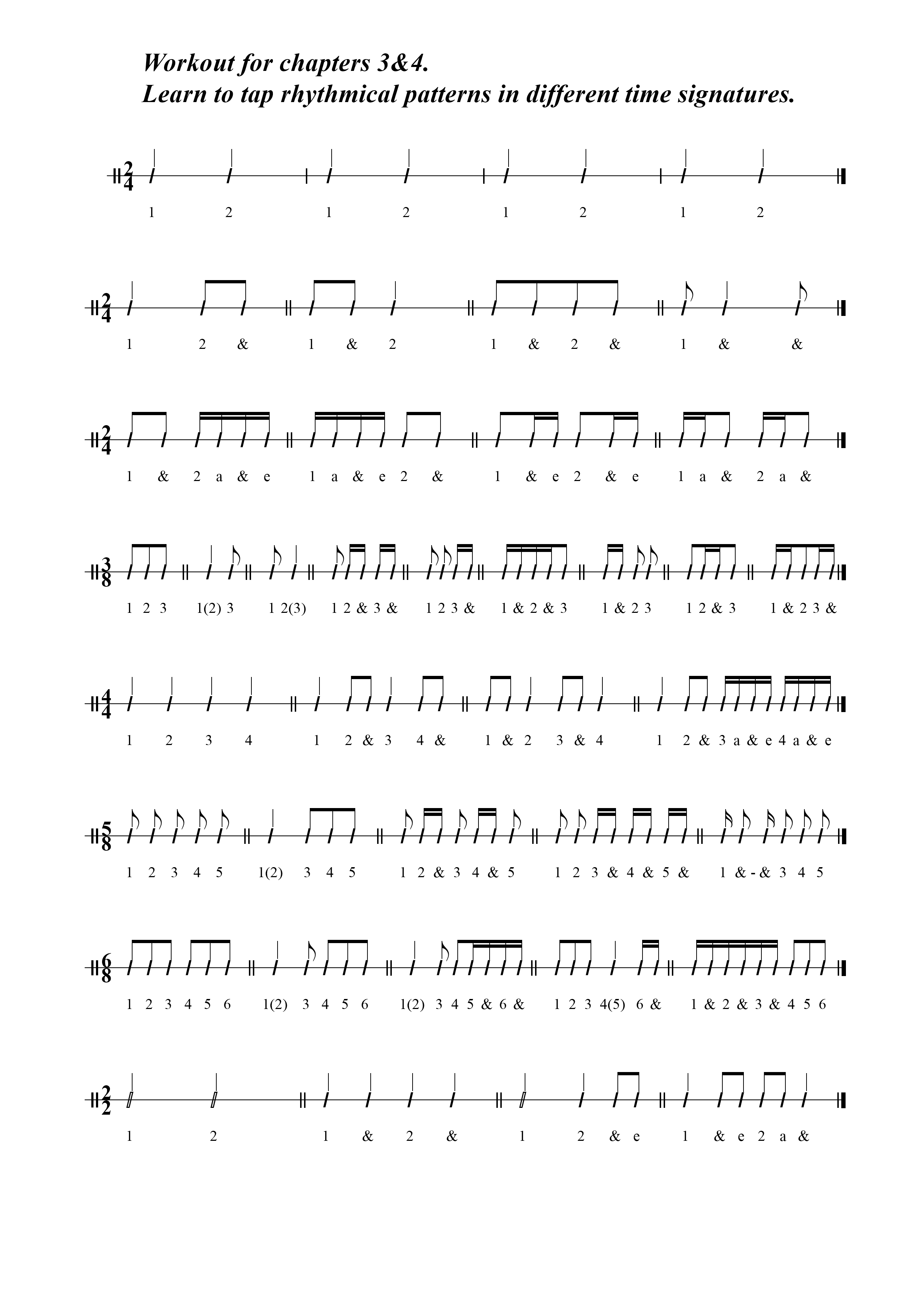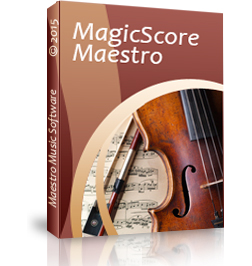Music theory. Rhythm
4. Rhythm
In order to correctly read and play a rhythm you have to learn how to correctly count beats and their subdivisions. In a duple meter like 2/4 or 4/4 you count the principal beats up to two, in a triple meter such as ¾ time you count the beats up to three and so on.
What is the principal beat? These are the length of notes specified by the denominator of the time signature. A 4 means that quarter notes are the principal beat. A 2 would mean that half notes are the principal beat.
We count the principal beats using whole numbers like this:

Smaller durations are counted in a different way. If a beat is divided in half, you have to count like this:
One-a-Two-a…

Note that even if beats are divided in half, the speed of the principal beats remain the same, but the subdivisions of the beat occur between them. It is important not to change the speed or the tempo of the music when they appear.
A beat can be divided not only in half, but also in three or four parts. Greater numbers of subdivisions are also possible.
Division into three parts can be counted like this:
One-b-c, Two-b-c etc., for example:
The principal beats (One and Two) still remain where they were. The gaps between them are filled in waltz time.

Division of a measure into four parts will be counted in a similar way:
One-b-c-d,

Two-b-c-d etc. This same counting system is also used with rests.
Task for Section 3 and 4. Learn to tap out different rhythmical patterns in different meters.








 Deutsch
Deutsch English
English Русский
Русский
Leave a Reply